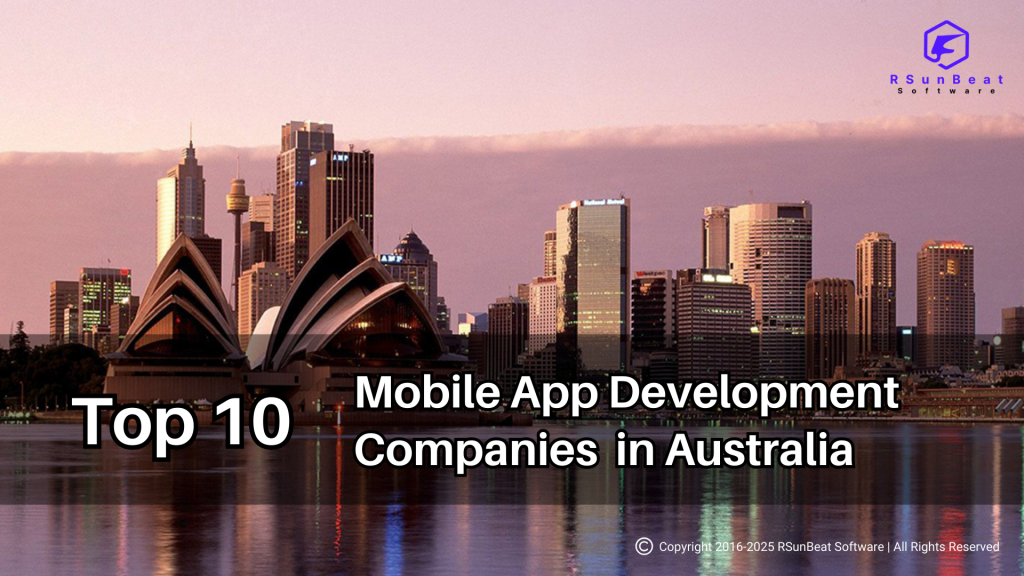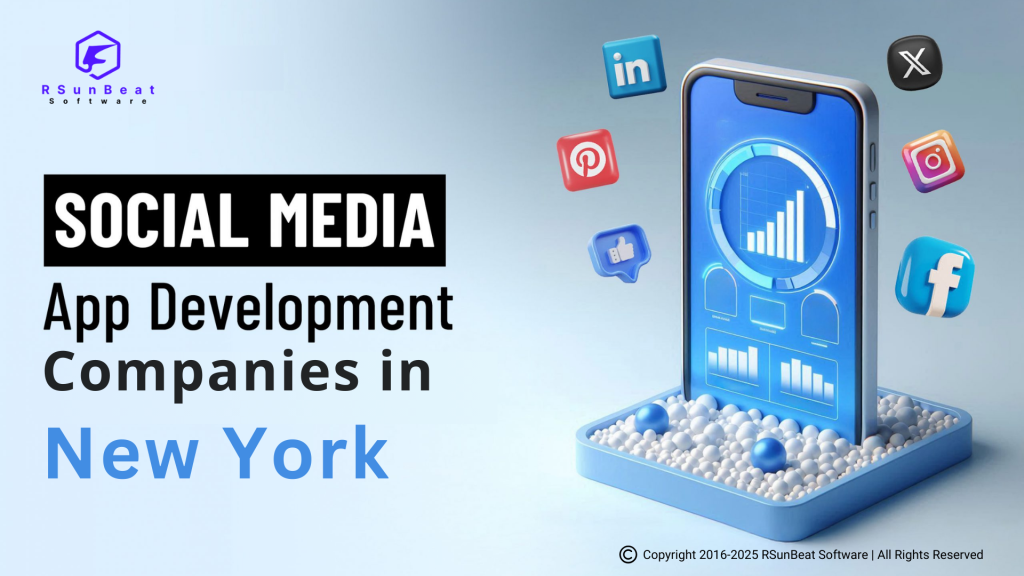
What is MVP & Why MVP (Minimum Viable Product) is a Game-Changer for Startups
In today’s rapidly evolving startup ecosystem, speed, efficiency, and adaptability are everything. Startups face tight deadlines, limited budgets, and fierce competition. Amid this pressure, launching a full-fledged digital product before understanding user needs can be a costly mistake. That’s where the concept of MVP, or Minimum Viable Product, becomes a crucial strategy for smart, lean startups.
At RSunBeat Software, we work closely with entrepreneurs and early-stage companies across industries to help them define, design, and deliver MVPs that validate their ideas, attract early adopters, and pave the way for scalable product development. In this comprehensive blog post, we explore what an MVP is, why it matters for startups in 2025, and how our strategic MVP development process minimizes risk while maximizing opportunity.
Understanding the MVP Concept
An MVP, or Minimum Viable Product, is the first, simplest version of a product that includes only the most essential features required to meet the core user need and test the viability of the concept. Unlike a prototype, which may be non-functional, an MVP is a functional product that can be launched to a real audience.
The goal is not to build something perfect but to build something functional, usable, and valuable enough to collect real feedback. This data-driven approach allows startups to refine their product direction based on what users actually want—not what founders think they want.
MVP vs Full Product: A Cost Comparison
To understand the financial value of MVPs, let’s compare the two approaches:
| Aspect | MVP Approach | Full Product Approach |
|---|---|---|
| Time to Market | 6-12 weeks | 6-12 months |
| Initial Investment | $10,000 – $40,000 | $80,000 – $200,000+ |
| User Feedback Cycle | Fast (weeks) | Slow (months) |
| Feature Prioritization | Lean, essential only | Comprehensive from day one |
| Market Risk | Lower | Higher |
Startups that skip MVP development often waste resources building features no one uses, only to pivot months later. MVPs provide a faster, safer, and more cost-effective way to validate ideas.
Why MVPs Are Game-Changers for Startups in 2025
1. Faster Time-to-Market: The speed of change in 2025 means being first often means winning. MVPs allow startups to launch in weeks, not months, capturing market share early and iterating later.
2. Real Market Validation: MVPs connect your vision with real users. Instead of relying on assumptions or internal opinions, you gain direct feedback that informs product direction, feature development, and even marketing strategies.
3. Cost Efficiency: Rather than sinking your entire budget into an unproven product, MVPs let you build smart, test early, and invest based on evidence.
4. Easier Fundraising: Investors prefer startups that show traction. A working MVP with active users, even in small numbers, gives you the credibility to raise capital.
5. Product-Market Fit: You can only achieve product-market fit through iteration. MVPs are the first step in this cycle, allowing you to test hypotheses and adapt rapidly.
When to Build an MVP
MVPs are particularly valuable for:
New product ideas in untested markets
Digital platforms with unique user experiences
Apps targeting niche demographics
SaaS solutions with a core functionality
Products that require user feedback for success
If you have an idea but are unsure if the market wants it—an MVP is your best next step.
RSunBeat Software’s MVP Development Process: Step-by-Step
Our team has developed a proven, agile framework for MVP development. Here’s how we transform ideas into viable, launch-ready products.
Step 1: Discovery & Product Strategy
We begin by understanding your vision, business model, and the problem you’re solving. Through discovery workshops, competitor analysis, and persona mapping, we identify what features are essential and which can wait.
Step 2: Feature Prioritization
We use methods like the MoSCoW framework (Must-have, Should-have, Could-have, Won’t-have) to prioritize features. This ensures we build the right MVP, not just the smallest.
Step 3: Wireframes & UX Flows
Our UX team creates wireframes and clickable prototypes that define user journeys, making sure the app is intuitive even in its lean form.
Step 4: UI Design
We apply your branding to design interfaces that feel modern, clean, and usable. Even MVPs need to look professional—especially if they’ll be shown to investors.
Step 5: Development
We use lean coding techniques and scalable architectures. Depending on your product, we may recommend:
React Native or Flutter for mobile MVPs
Node.js or Laravel for backend
Firebase or Supabase for quick, cost-effective infrastructure
Step 6: Testing & Feedback
Before launch, we conduct QA testing, user testing, and feedback loops. We help you onboard early users or beta testers for validation.
Step 7: MVP Launch & Iteration Plan
Once your MVP is live, we provide support for iteration based on analytics and user data. We help plan V2, V3, and beyond.
Common MVP Mistakes Startups Make (and How to Avoid Them)
| Mistake | Impact | RSunBeat Solution |
| Building too many features | Bloated costs, long dev time | Strategic prioritization through discovery |
| Ignoring user feedback | Poor adoption | Feedback-driven iteration process |
| Delaying launch for perfection | Missed market opportunity | Lean delivery model focused on speed |
| Choosing the wrong tech stack | High cost or poor performance | Expert advisory during planning phase |
MVP Success Stories: From Idea to Impact
Many of today’s most successful products began as MVPs:
Airbnb: Started with a simple landing page and 3 listings to test if people would book rooms in strangers’ homes.
Dropbox: Used a 3-minute explainer video as their MVP to validate interest before building.
Instagram: Originally launched as a photo filter app, later evolving into the social giant we know today.
These brands didn’t wait for perfection—they launched early, learned fast, and iterated often.
MVPs in 2025: Emerging Trends
As technology advances, so does the MVP process. Here’s what’s trending:
AI-Powered MVPs: Using LLMs and APIs to build smart features fast (chatbots, recommendations, auto-summarization).
No-Code/Low-Code Platforms: Speed up MVP launch for non-technical founders.
Headless Architecture: Separate frontend and backend to allow flexible scaling.
Data-Driven Prototypes: Using real-time analytics and behavior insights to design MVPs.
Why Choose RSunBeat Software for Your MVP Development
We are not just developers. We are your innovation partner. RSunBeat Software empowers founders to launch quickly, learn rapidly, and grow confidently. Our expertise spans:
10+ years of product development
Dozens of MVP launches across healthcare, fintech, eCommerce, logistics, and education
Dedicated UI/UX and full-stack teams
Agile delivery with clear milestones and full transparency
We don’t overpromise. We overdeliver.
Ready to Turn Your Idea Into a Scalable Product?
Let’s build an MVP that works, sells, and grows. Whether you’re starting from scratch or refining your pitch to investors, our team will help you:
Define your core value proposition
Design your MVP architecture
Develop and deploy your product in 6–8 weeks
Create a roadmap for scale
Contact RSunBeat Software today to get started.
Testimonials ~
What Our Clients
Are Saying
Your trust drives our passion. Here’s how we’ve helped businesses like yours thrive with tailored solutions and unmatched support.

Hussein Termos
CEO
“RSunBeat Software is a top-tier web development company for the real estate industry. They delivered a user-friendly, customized platform that met our needs perfectly. Their innovative solutions, on-time delivery, and excellent support made the process seamless. Highly recommended for exceptional development services!”

James Carten
Founder & CEO
“Before working with RSunBeat Software, our real estate business faced issues with unreliable mobile apps, poor user experiences, and missed deadlines. RSunBeat delivered a seamless, high-performing app with excellent functionality, intuitive design, and timely execution, transforming our operations. Their expertise and dedication make them a trusted partner.”

Darla Shewmaker
VP of Marketing
“RSunBeat Software developed a great, user-friendly mobile app that exceeded our expectations. The team was extremely professional, kept us updated throughout the process and completed the work on time. Their expertise and dedication made the whole project seamless. We highly recommend RSunBeat for their great work and reliability!”

Nicholas Toh
Project Manager
“RSunBeat Software delivered an amazing web and app development experience. Their team was highly professional, detail-oriented, and dedicated to bringing our vision to life. The final product was seamless, user-friendly, and exceeded our expectations. We highly recommend them for top-notch development services!”
Our Technology Experts
Are Change Catalysts
Mail to Our Sales Department
info@rsunbeatsoftware.com
Our Skype Id
Rsunbeat Software


